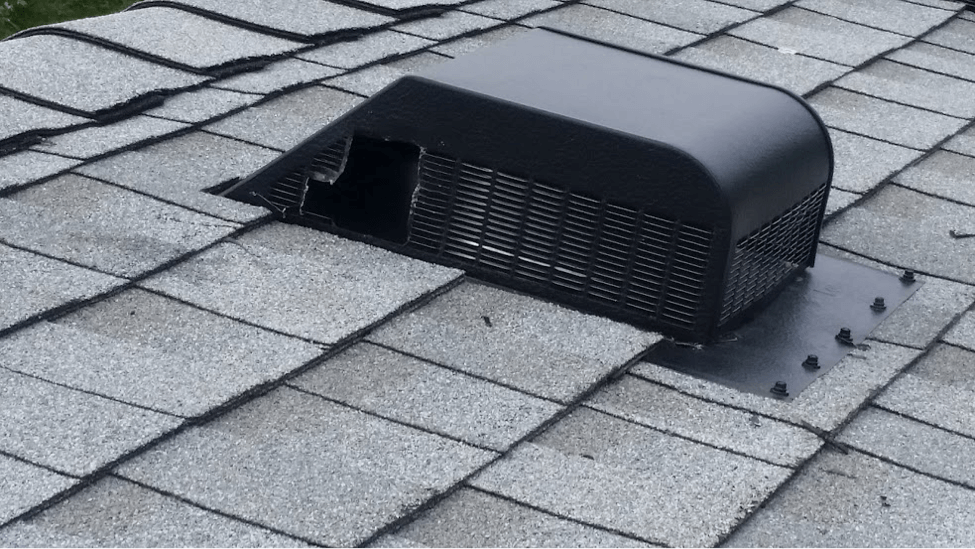Proper roof venting is critical to maintaining a healthy attic and extending the lives of roofs and shingles. Unfortunately for many homeowners who suffer a visit from uninvited house guests the route into the attic is very often through vents on the roof.
Roof venting allows air inside the attic to move and escape which is important for keeping temperatures down during the summer and reducing condesation and moisture that can rot wood and cause mold during winter.
To vent the attic, holes are cut in the roof board and covers are installed over top to prevent rain and snow from getting inside. When it comes to roof vent covers there are many different styles, shapes and materials available on the market but they’re all designed to do the same thing – allow attic air to escape while keeping water out.
One thing roof vents don’t do a good job of keeping out is urban wildlife. Raccoons, squirrels, birds, mice and bats all use roof vents as a point of entry into attics. They are able to detect the flow of air from the attic and recognize that warmth is waiting on the other side. Water doesn’t run up hill, so most roof vents are covered on the top to keep weather out with openings on the underside to allow the air to pass.
In the case of raccoons they easily rip and tear roof vent covers. Squirrels make short work of plastic and aluminum by chewing them with their powerful teeth while mice, bats and birds slip in from open undersides.
In recent years manufacturers have begun to address the threat of wildlife damage and some have even begun to market their products as animal proof. The design pictured below is touted as a wildlife proof roof vent and while it does a good job of keeping out birds and bats it most certainly can’t stop raccoons, squirrels and mice that have the ability to chew through the aluminum.
The design does not have an open underside but instead allows are to escape the attic through small slats that run along three sides of the vent. Those slats allow raccoons to get their paws in to work at the thin aluminum and they also provide an edge for squirrels and mice to chew.
Despite what a roofer might tell you these vents will not protect you from wildlife intrusion. As part of the Skedaddle process we will be sure to inspect your roof vents for wildlife damage and vulnerability. If wildlife is living inside your attic and coming and going through your roof vents we will not only remove them, but also repair the damage and prevent future re-entry.
We install heavy gauge wire screening over top of roof vents covers that will keep animals out and won’t prevent air flow. If you’re living with unwanted wildlife then call Skedaddle Humane Wildlife Control today, we’ve getting animals and keeping them out since 1989.
Our workmanship and materials are backed by a lifetime guarantee! 1.888.592.0387
Proudly Servicing: Hamilton, Burlington, Oakville, Mississauga, Brampton, Kitchener-Waterloo, Cambridge, Guelph, Niagara Region, Ottawa, Sudbury, Montreal and Halifax





